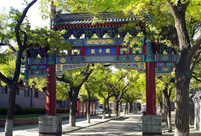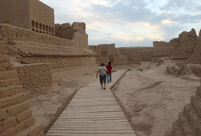 Global ambassadors of ecotourism gather in Nanjing
Global ambassadors of ecotourism gather in Nanjing
 Taiwan woman marries into Kazak family, 100 sheep plus a flat as dowry
Taiwan woman marries into Kazak family, 100 sheep plus a flat as dowry
 College girls take graduation photos under water in Chongqing
College girls take graduation photos under water in Chongqing
 Cartoon: Xi and football
Cartoon: Xi and football
 Chinese influence sweeps ROK
Chinese influence sweeps ROK
 Post-90s beauty boxer grapples four men
Post-90s beauty boxer grapples four men
 3,000-year-old tea town through lenses
3,000-year-old tea town through lenses
 22 archaeological sites along Silk Road in China
22 archaeological sites along Silk Road in China
 Football babies, Samba dancers embrace 'World Cup'
Football babies, Samba dancers embrace 'World Cup'
 Beautiful scenery along China’s Grand Canal
Beautiful scenery along China’s Grand Canal
WELLINGTON, July 4 -- New Zealand astronomers who took part in an international discovery of an Earth-sized planet with an Earth-like orbit around one of a set of twin stars say the find opens up the possibility of many more potentially life-hosting planets than previously thought.
Scientists from Auckland, Massey and Canterbury universities and Auckland's Stardome Observatory were among 64 authors named in an article on the discovery published in Science magazine Friday.
The planet was the first terrestrial planet with an Earth-like orbit ever discovered in a binary star system, a common constellation of two stars orbiting each other.
"This discovery is exciting because we weren't certain that terrestrial planets could form around one star of a binary star system," University of Auckland physics senior lecturer Nicholas Rattenbury said in a statement.
"This tells us there are many more stars in our galaxy that could potentially be the host star to habitable planets."
The new planet was 3,000 light years away and twice the mass of Earth. It orbited one of two stars in its binary system at about the same distance Earth orbits the Sun, but the star was much dimmer than the Sun, meaning the planet was extremely cold, at around minus 210 degrees centigrade, and unlikely to harbor life on its surface.
Astronomers found the planet by using technique known as microlensing, which measures how the gravity of a planet and its host star deflects light coming from background stars.
"Twenty years ago, the first extra-solar planet discoveries were being made. Today, we find it likely the galaxy is teeming with planets. Will some of them harbour life? That is of course the big question," said Rattenbury.
 Featured hutongs in Beijing
Featured hutongs in Beijing Separate college entrance exam
Separate college entrance exam Flash mob dance
Flash mob dance Picturesque scenery of Ghost City
Picturesque scenery of Ghost City Children attend First Writing Ceremony
Children attend First Writing Ceremony Female master poses for graduation photos with son
Female master poses for graduation photos with son Silk Road, China's Grand Canal listed as World Heritage Sites
Silk Road, China's Grand Canal listed as World Heritage Sites PKU students imitate famous paintings in real-person photos
PKU students imitate famous paintings in real-person photos Chinese 'Slumdog Millionaire'
Chinese 'Slumdog Millionaire' Islands in S. China Sea better shown on new vertical atlas of China
Islands in S. China Sea better shown on new vertical atlas of China Girl takes father’s portrait to travel the world
Girl takes father’s portrait to travel the world Images of Xi'an: Part one
Images of Xi'an: Part one In Pictures: Female fans of World Cup
In Pictures: Female fans of World Cup Top 20 hottest women in the world in 2014
Top 20 hottest women in the world in 2014  China's top 10 representative architectures
China's top 10 representative architecturesDay|Week|Month